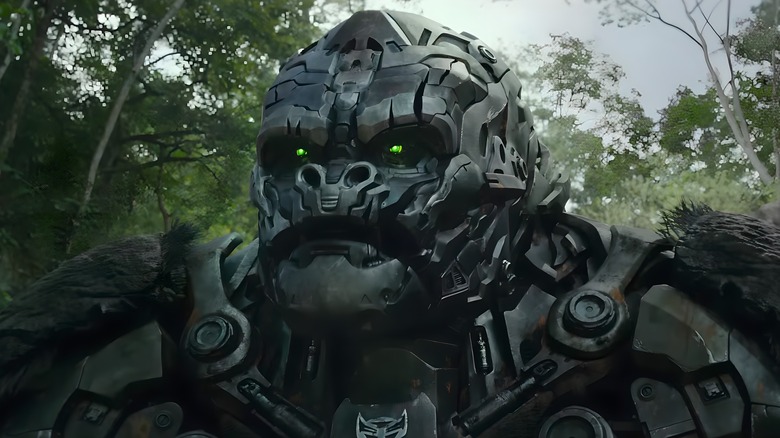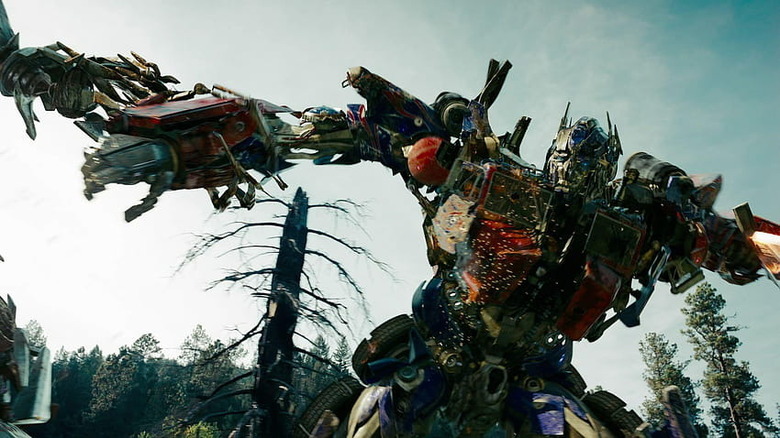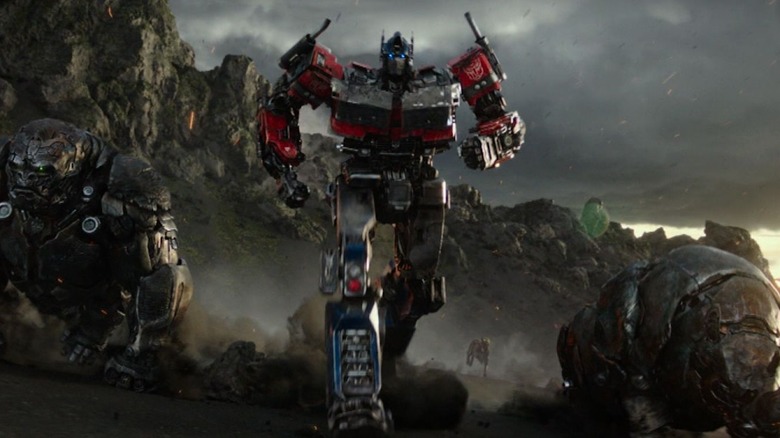How Rise Of The Beasts Fixes The Michael Bay Transformers' Biggest Problem
Contains spoilers for "Transformers: Rise of the Beasts"
For years, the "Transformers" movie franchise was synonymous with director Michael Bay. The first five films exemplified what would be referred to as "Bayhem," complete with explosions, sophomoric humor, and nonsensical plots. Given the financial success of these movies, it's hard to argue with the results even if many of these films, particularly the four sequels building off 2007's "Transformers," weren't received well by critics.
2018's "Bumblebee" represented a fresh step for the series, earning a franchise-best Rotten Tomatoes score of 91% from professional reviewers. In a way, "Transformers: Rise of the Beasts" splits the difference between these two aesthetics. It has a bit more bombastic action going for it, reminiscent of the Michael Bay films, but it maintains more of an emotional core that helped make "Bumblebee" stand out.
And while there's plenty of action, it's hard not to recognize one major improvement over the Bayverse, namely that you can actually make out what's happening during the fights. As is the case with many of Bay's films, the fights in the "Transformers" movies tend to be a lot of sound and fury, signifying nothing. But "Rise of the Beasts" wisely takes steps in the right direction to make these sequences resonate.
Duller backgrounds and greater clarity allow the Rise of the Beasts fights to make sense
Given how Michael Bay is so closely affiliated with explosions and over-the-top fight scenes, it's a bit weird so many of the fights in his "Transformers" movies are barely legible. Given the muted color palettes of both Autobots and Decepticons, as well as the conflicts taking place in cities a lot of the time, it tends to look like metal clashing against metal. When a battle actually does end, it can take a second to figure out if an Autobot or Decepticon emerged victorious. This problem only exacerbated as the sequels went on, with each fight getting uglier than the last.
However, "Rise of the Beasts" takes a smart approach to ensure audiences can follow the action, especially when it comes to the final climactic battle. This particular fight occurs amidst a barren backdrop. Some viewers may not like having such a dull battleground, but in this instance, it actually works to the film's advantage. With all the gray in the background, it's easier to make out the combatants. One can follow the action and determine who's fighting who.
Granted, VFX technology is more advanced now than it was in the 2000s and 2010s, which inevitably aided with such fights anyway. But the decision to forego wanton destruction in a city for something that's admittedly a bit duller inevitably helped make the "Rise of the Beasts" fights far more enjoyable to watch.
Simpler designs also help a great deal
Live-action adaptations of cartoons in the 2000s and 2010s had a bad habit of overcomplicating what should've been simple designs. The Transformers in Michael Bay's movies have a lot going on, extending into another Bay-involved series, "Teenage Mutant Ninja Turtles." While these designs may have been justified by claiming there's greater realism, people ultimately want to see something that reminds them of the cartoons they loved as children.
A big selling point of 2018's "Bumblebee" is that the titular character, as well as other Autobots, had designs that more closely resembled their cartoon counterparts. They were cleaner and simpler, and "Rise of the Beasts" wisely follows this direction. The new movie opts for more basic designs on top of having brighter color palettes, so when Optimus Prime (Peter Cullen) fights Scourge (Peter Dinklage), his signature red and blue look easily contrasts with the general grayness of Scourge.
It's interesting how over-the-top the Michael Bay movies were and how subsequent spin-offs and prequels have opted for a "less is more" approach. Inevitably, some may miss the Bayhem of these films, but not feeling like you need to wash your eyes after a "Transformers" movie is a pretty good trade-off.


